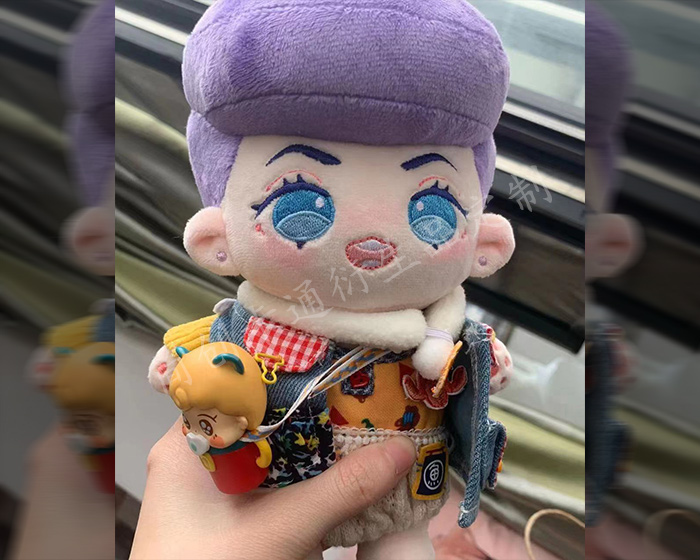cotton dolls, also known as Rag Dolls or fabric dolls, have been an important part of various cultures around the world. These dolls are typically made from scraps of fabric, particularly cotton, and are often handcrafted with great care and attention to detail. The cultural significance of cotton dolls varies across different regions and can encompass various aspects such as heritage, tradition, storytelling, and even spiritual beliefs. Let's explore the cultural significance of cotton dolls in a few regions:
-
United States:
In the United States, cotton dolls have a significant place in African American culture. During the era of slavery, when enslaved people were not allowed to own toys, they created cotton dolls as a form of self-expression and to provide comfort to their children. These dolls were made using scraps of fabric and cotton, often resembling the physical features of African Americans. Cotton dolls played a crucial role in preserving cultural identity and passing down traditions through generations. -
Europe:
In Europe, cotton dolls have been popular for centuries. In countries like England, France, and Germany, Rag Dolls have been cherished as traditional toys. These dolls were handmade by mothers or grandmothers for their children, using remnants of fabric from old clothes. They were often dressed in regional attire, reflecting cultural heritage and traditions. Cotton dolls were not only playthings but also served as companions for children and helped foster creativity and imagination. -
Latin America:
In many Latin American countries, cotton dolls hold cultural significance as symbols of folklore and tradition. For example, in Mexico, the tradition of making rag dolls called "muñecas de trapo" is deeply rooted. These dolls are often crafted during festivals and represent characters from traditional folktales and indigenous cultures. They are made with vibrant fabrics and serve as decorative items as well as toys. Cotton dolls in Latin America are associated with storytelling, celebrating heritage, and promoting cultural pride. -
Asia:
Cotton dolls are also prevalent in various Asian cultures. In Japan, there is a long-standing tradition of making fabric dolls known as "kimekomi ningyo." These dolls are made with cotton or silk fabric, and their clothes are intricately designed using traditional Japanese patterns. Kimekomi ningyo dolls are considered an art form and are often displayed during special occasions and festivals. They represent cultural heritage, craftsmanship, and aesthetic beauty. -
Africa:
Cotton dolls hold cultural significance in many African regions. For instance, in Ghana, there is a tradition of creating cloth dolls called "akua'ba." These dolls are typically made by Ashanti women and are associated with fertility and motherhood. They have flat, disk-like heads and simplified bodies, reflecting the traditional aesthetics of the Ashanti people. Akua'ba dolls are often given to young girls and women as a symbol of blessing and hope for a prosperous future.
It's important to note that the cultural significance of cotton dolls can vary within each region and may have additional meanings or interpretations based on local customs and beliefs.
The following are some examples of plush toys that our factory customizes for customers. Check out if there is one that you like best.
-
Custom Stuffed Animals
-
Plush Toy
-
Plush Dolls
-
Custom Animal Plush
-
Cute Plush Doll
-
Custom Stuffed Dolls
-
Custom Plush Toy
-
Cotton Dolls
-
Weighted Plush Toys
-
Cute Stuffed Animals
-
Custom Pet Stuffed Animal
-
Warmies Stuffed Animals
-
Weighted Stuffed Animal
-
Soft Toys
-
Plush Stuffed Doll
-
Custom Stuffed Dolls
-
Plush Maker
-
Bear Stuffed Toy
-
Anime Plush
-
Custom Stuffed Animal
-
Anime Plush
-
Custom Plush Toy
-
Personalised Stuffed Animal
-
Plush Animal Toys
-
Custom Plush Makers
-
Custom Plushies
-
Toy Manufacturer
-
Rag Doll Making
-
Custom Toys
-
Dog Plush Toys
-
Custom Rag Doll
-
Stuffed Animals
-
Custom Plush
-
Custom Plush Dolls
-
20cm Cotton Doll
-
Jojo Plush
-
Custom Doll
-
Jojo Doll
-
Large Plush Toys
-
15cm Cotton Doll
-
Dumpling Plush
-
Cotton Doll


























